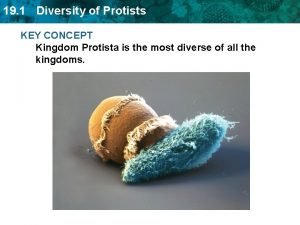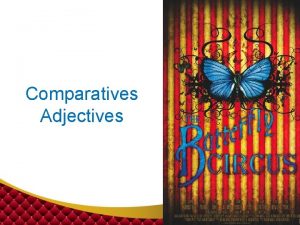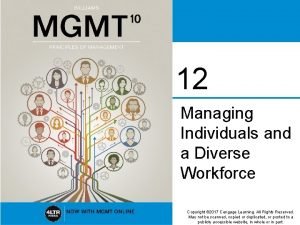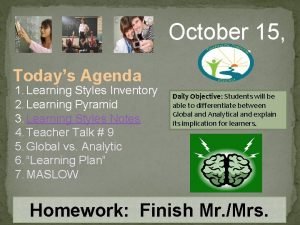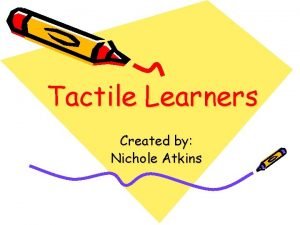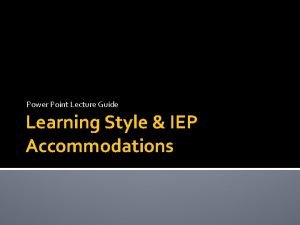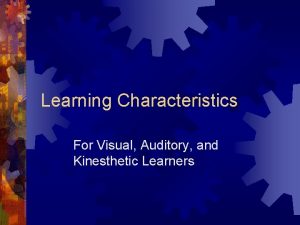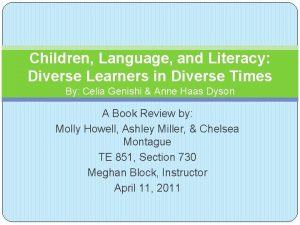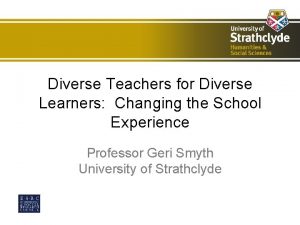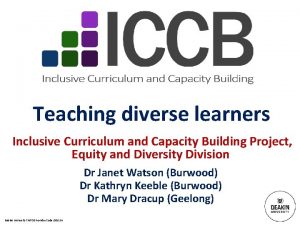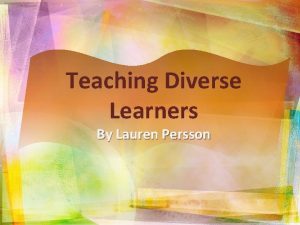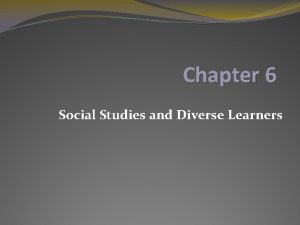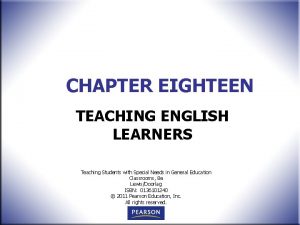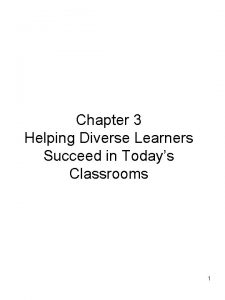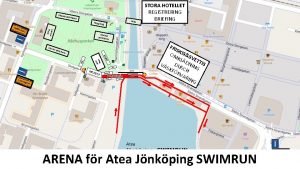CHAPTER 3 Planning For and Teaching Diverse Learners



















- Slides: 19

CHAPTER 3 Planning For and Teaching Diverse Learners To accompany Helping Children Learn Math 10 e, Reys et al. © 2009 John Wiley & Sons

Focus Questions 1. What questions must an elementary mathematics teacher answer when planning for teach? 2. Why does the teacher plan mathematics lessons so carefully? 3. What levels of plans does the teacher create? 4. What are three types of lessons used to teach mathematics, and what is the purpose of each? 5. How can the teacher meet the needs of all students? 6. How does the teacher integrate planning with assessing and analysis? Reys/ Lindquist/ Lamdin/ Smith, Helping Children Learn Math, 10 th Edition, © 2012

PREPARING TO TEACH: QUESTIONS TO ASK BEFORE PLANNING BEGINS • Do I understand the mathematics I am teaching? • Where are my students developmentally? • What do my students know? Reys/ Lindquist/ Lamdin/ Smith, Helping Children Learn Math, 10 th Edition, © 2012

Preparing to Teach (cont. ) • What kinds of tasks will I give my students? ▫ Focus on the mathematics. ▫ Provide necessary practice. ▫ Encourage high-level thinking • How will I encourage my students to communicate? ▫ Talking ▫ Questioning ▫ Grouping Reys/ Lindquist/ Lamdin/ Smith, Helping Children Learn Math, 10 th Edition, © 2012

Preparing to Teach (cont. ) • What materials will we use? ▫ ▫ ▫ Textbook lessons Standards-based Curricula Children’s Literature Manipulatives Technology Reys/ Lindquist/ Lamdin/ Smith, Helping Children Learn Math, 10 th Edition, © 2012

Effective Mathematical Tasks • Are often authentic in that they come from the students’ environment • Are challenging yet within students’ reach • Pique the students’ curiosity • Encourage students to make sense of mathematical ideas • Encourage multiple perspectives and interrelated mathematical ideas • Nest skill development in the context of problem solving (Reys and Long, 1995) Reys/ Lindquist/ Lamdin/ Smith, Helping Children Learn Math, 10 th Edition, © 2012

Include questions that help students: 1. work together to make sense of mathematics. 2. rely more on themselves to determine whether something is mathematically correct. 3. learn to reason mathematically. 4. learn to conjecture, invent, and solve problems. 5. connect mathematics, its ideas, and its applications. Professional Standards for Teaching Mathematics National Council of Teachers of Mathematics, 1991, pp. 3, 4 Reys/ Lindquist/ Lamdin/ Smith, Helping Children Learn Math, 10 th Edition, © 2012

Manipulatives The teacher should be certain that: 1. manipulatives have been chosen to support the lesson's objectives. 2. students have received orientation concerning the manipulatives and classroom procedures. 3. the lesson involves active participation of each student. 4. the lesson plan includes procedures for evaluation that reflect an emphasis on the development of reasoning skills. Ross and Kurtz, 1993, p. 256 Reys/ Lindquist/ Lamdin/ Smith, Helping Children Learn Math, 10 th Edition, © 2012

Types of Educational Software • Drill and Practice provides practice for a skill already taught. • Tutorial provides instruction on new skills. • Simulation allows students to experience events or environments that would not otherwise be available. Reys/ Lindquist/ Lamdin/ Smith, Helping Children Learn Math, 10 th Edition, © 2012

Types of Educational Software (cont’d) • Educational Game includes an opportunity to win or overcome an obstacle. • Problem-Solving aids in the development of higherorder thinking. • Tool provides assistance with graphing, computing, visualizing. Reys/ Lindquist/ Lamdin/ Smith, Helping Children Learn Math, 10 th Edition, © 2012

Planning for Effective Teaching § Importance of Planning § Levels of Planning for the Year Planning Units Planning for Daily Lessons § Planning Different Types of Lessons § Meeting the Needs of all Students § Assessment and Analysis in Planning Reys/ Lindquist/ Lamdin/ Smith, Helping Children Learn Math, 10 th Edition, © 2012

Meeting the Needs of All Students: Teaching English Language Learners • Give students comprehensible input (i. e. language they will understand). • Give students opportunities to increase verbal interaction during class activities (i. e. to talk more with you and with the other children). • Teach in a way that contextualizes language. Reys/ Lindquist/ Lamdin/ Smith, Helping Children Learn Math, 10 th Edition, © 2012

Teaching English Language Learners (cont. ) • Use teaching strategies and groupings that reduce the anxiety of students. • Assign activities in the classroom that offer students opportunities for active involvement. (Herrell, 2000, p. xiv) Reys/ Lindquist/ Lamdin/ Smith, Helping Children Learn Math, 10 th Edition, © 2012

Meeting the Needs of All Students: Potential Barriers for Students with Special Needs • Memory: visual memory, verbal/auditory memory, working memory • Self-regulation: excitement/relaxation, attention, inhibition of impulses • Visual Processing: visual memory, visual discrimination, visual/spatial organization, visual-motor coordination Reys/ Lindquist/ Lamdin/ Smith, Helping Children Learn Math, 10 th Edition, © 2012

Potential Barriers for Students with Special Needs (cont. ) • Language Processing: expressive language, vocabulary development, receptive language, auditory processing • Related academic skills: reading, writing, study skills • Motor Skills: writing legibly, aligning columns, working with small manipulatives, using one-toone correspondence, writing numerals (Karp and Howell, 2004, p. 120) Reys/ Lindquist/ Lamdin/ Smith, Helping Children Learn Math, 10 th Edition, © 2012

Meeting the Needs of All Students: Nine Types of Adaptations 1. 2. 3. 4. 5. Size Time Level of Support Input Difficulty 6. 7. 8. 9. Output Participation Alternate Goals Substitute Curriculum Reys/ Lindquist/ Lamdin/ Smith, Helping Children Learn Math, 10 th Edition, © 2012

ASSESSMENT AND ANALYSIS IN PLANNING • Assessment should be an integral aspect of mathematics instruction. • Many teachers also find it helpful to keep an evaluative record of the effectiveness of their lessons. Reys/ Lindquist/ Lamdin/ Smith, Helping Children Learn Math, 10 th Edition, © 2012

Can you find the pattern? • Select any number on the hundred board and mark it using a color tile. • Circle the numbers directly above, directly below, to the right, and to the left of your selected number. These numbers form your four-point square. • What is the average of these four vertex numbers? • Select another number and repeat the averaging process. • After trying several examples, do you have a conjecture about the pattern? Reys/ Lindquist/ Lamdin/ Smith, Helping Children Learn Math, 10 th Edition, © 2012

Can you find the pattern? • • • Use your conjecture to answer the following question: The vertex numbers of a four-point square add to 224. What number is at the center of the square? Can you explain why the pattern works? Can you model with blocks or a number line? Reys/ Lindquist/ Lamdin/ Smith, Helping Children Learn Math, 10 th Edition, © 2012
 Technology for diverse learners
Technology for diverse learners Animal like protists
Animal like protists Teaching grammar to young learners
Teaching grammar to young learners Advantages of remedial teaching
Advantages of remedial teaching Teaching young learners english
Teaching young learners english Chapter 16 section 1 russia and the western republics
Chapter 16 section 1 russia and the western republics Difference between microteaching and traditional teaching
Difference between microteaching and traditional teaching Resolution no. 435
Resolution no. 435 National program for gifted filipino
National program for gifted filipino Passive learning vs active learning
Passive learning vs active learning One syllable adjectives
One syllable adjectives Working with culturally and linguistically diverse families
Working with culturally and linguistically diverse families Family matters definition
Family matters definition Surface-level diversity
Surface-level diversity Global vs analytical learners
Global vs analytical learners Facts about tactile learners
Facts about tactile learners Global vs analytical learners
Global vs analytical learners Characteristics of kinesthetic learners
Characteristics of kinesthetic learners Lazy learner and eager learner
Lazy learner and eager learner Kinesthetic imagery
Kinesthetic imagery

